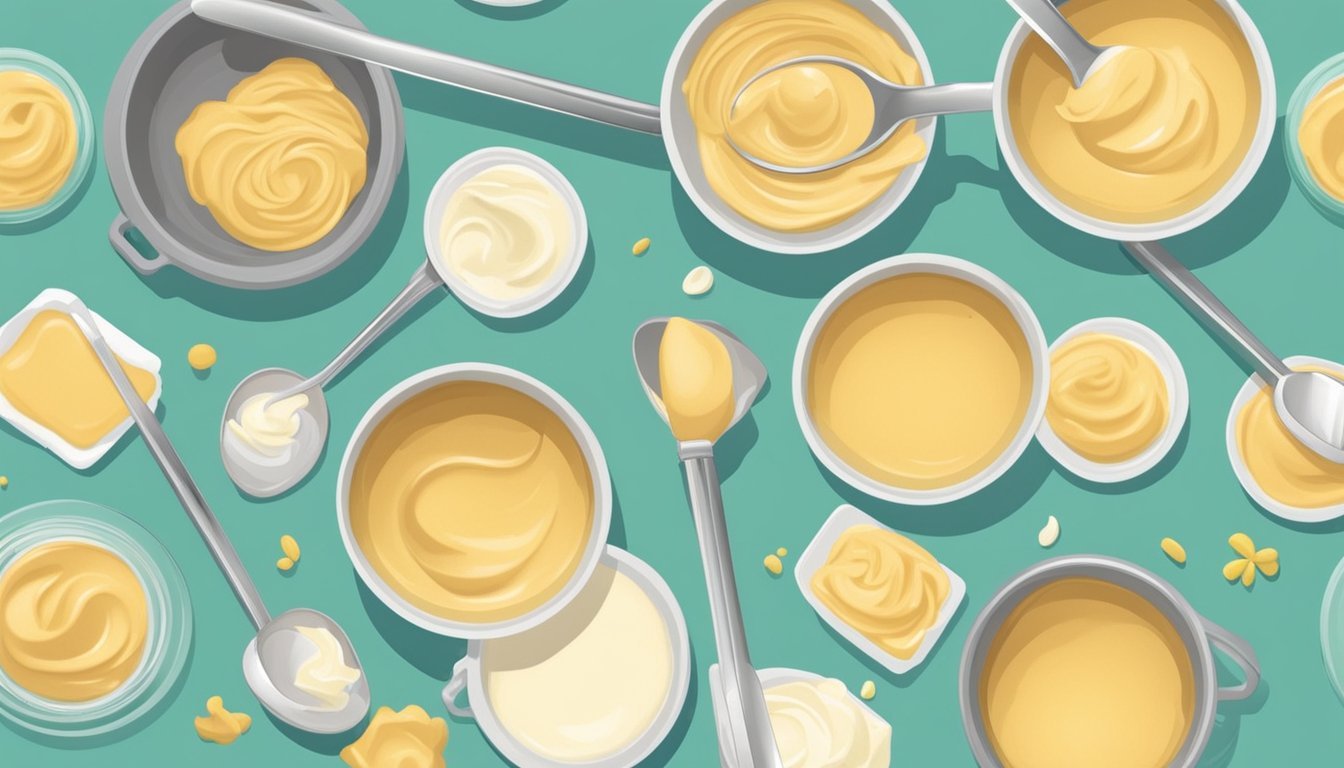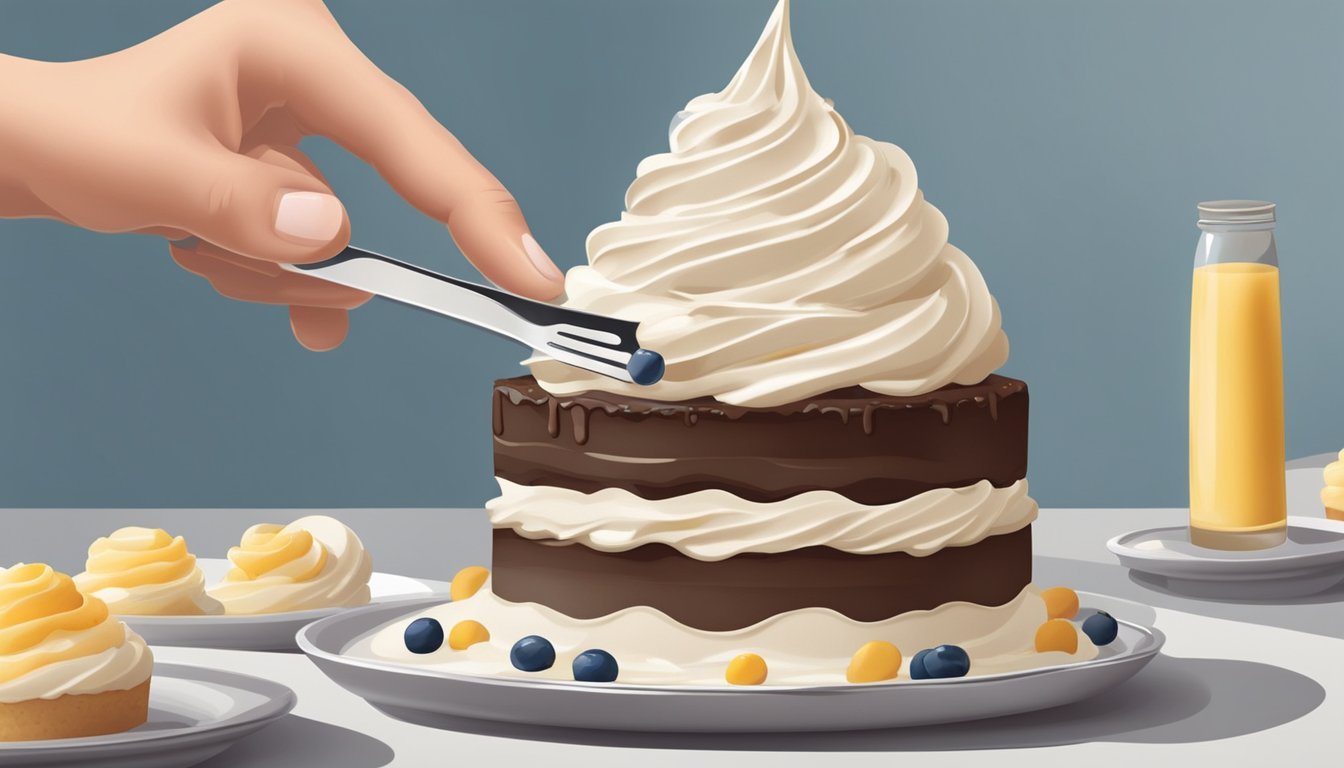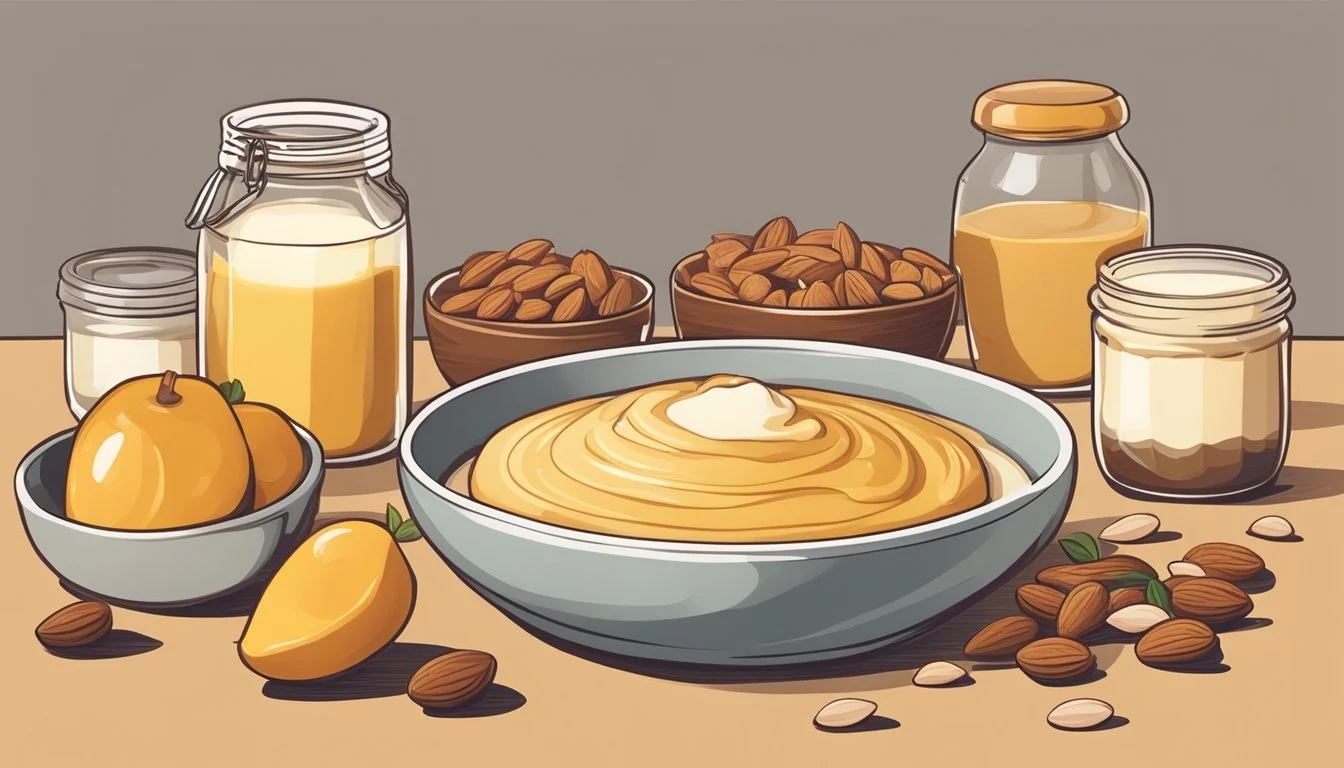Instant Pudding Mix Frosting Ideas
Creative Twists for Delicious Desserts
When it comes to cake decorating, frosting is the element that elevates both the look and taste of any cake. Traditional frosting often calls for a delicate balance between ingredients like butter, confectioners' sugar, and some variety of liquid to achieve the right consistency and flavor. However, for bakers seeking a reliable alternative that saves time without compromising taste or texture, instant pudding mix proves to be an innovative solution.
Instant pudding mix, when used in frosting, lends a smooth, creamy consistency that is both spreadable and stable. The range of flavors available in pudding mixes also provides a versatility that allows bakers to customize their frosting to suit any cake, providing an excellent base for creativity. The process of using pudding mix in frosting is straightforward: One simply combines the mix with powdered sugar and then introduces cold milk until the desired thickness is achieved before spreading it onto the cake.
The popularity of this hack lies in the simplicity and the end result—a frosting that can hold its shape well with a rich and creamy texture. Bakers often complement the pudding mix with additions such as whipped cream to create a light texture, or they may opt for the mix alone for a denser frosting. Furthermore, variations of the recipe allow for different dietary needs, including sugar-free options, ensuring that instant pudding mix frosting can be a go-to technique for a wide audience.
Basics of Pudding Mix Frosting
Incorporating instant pudding mix into frosting can enhance both taste and texture. This section explores the fundamentals of pudding mix frosting and the roles of key ingredients.
Understanding Instant Pudding Mix
Instant pudding mix is a blend of sweeteners, thickeners, and flavorings that sets quickly when combined with a liquid, typically milk. In the context of frosting, the mix serves to thicken the frosting, improving its spreadability and stability. It helps maintain a consistent texture, making it an excellent choice for intricate cake decorations that must hold their shape over time.
Essential Ingredients and Their Roles
Instant Pudding Mix: Provides structure and flavor to the frosting. Is essential for achieving the desired consistency.
Milk: Acts as a liquid base to dissolve the pudding mix. It contributes to the creamy texture of the frosting.
Ingredient Role in Frosting Instant Pudding Mix Enhances consistency and adds flavor Milk Dissolves mix; contributes to creaminess
Powdered Sugar: Often included to add sweetness and further refine the frosting's texture. It helps balance the fat content, allowing for a smoother spread.
Fat (Butter/Cream): The fat component is important in frosting as it gives richness and helps achieve a velvety texture.
Texture & Consistency: The interplay of these ingredients is crucial. Fat provides creaminess, the instant pudding mix lends stability, and milk binds everything while contributing to the luscious mouthfeel. The powdered sugar acts as a sweetener and also affects the frosting's stiffness, enabling it to hold up on cakes and pastries.
Perfecting the Texture
The texture of instant pudding mix frosting hinges on the method used to combine ingredients and the temperature at which they are mixed. Proper technique will yield a frosting that is both light and airy, free of lumps, with the desired peak stiffness.
Achieving Light and Airy Frosting
In their quest for a light and airy frosting, bakers should focus on the incorporation of air. This involves starting with the pudding mix and powdered sugar in a bowl, ensuring they are whisked until smooth before any liquids are added. Once smooth, gradually add cold milk, which helps maintain the structure of the mixture. The action of a whisk is critical here—continuous, brisk strokes introduce air, which contributes to the desired fluffy texture. If using a whipped topping such as Cool Whip, it should be folded gently into the mixture. The objective is to keep the incorporated air intact, which is best achieved by using broad, folding motions rather than vigorous stirring.
Avoiding Common Mistakes
Certain common errors can lead to a frosting that falls short of the ideal consistency:
Overmixing: Once whipped topping is added, excessive stirring can deflate the frosting. Be gentle.
Temperature: All ingredients should be at cool room temperature unless otherwise specified. Cold ingredients can lead to stiff peaks, while warm ones might not hold shape.
Lump Prevention: Lumps in frosting are typically due to improper mixing. One should sieve powdered ingredients before combining and whisk until fully incorporated.
To ensure stiff peaks and a smooth mixture, the ideal sequence is mixing the dry ingredients first, adding liquids, then folding in any whipped components. Using these methods, bakers will prepare a consistently soft and enjoyable frosting.
Flavor Variations
Instant pudding mix frosting offers a spectrum of flavors, ensuring versatility and the opportunity to complement any type of cake. Here are some delectable flavor variations to elevate your desserts.
Chocolate Indulgence
For chocolate lovers, incorporating chocolate pudding mix into your frosting can create a rich and deeply satisfying flavor. To further intensify the chocolate experience, one might:
Mix in chocolate chips or shavings for added texture
Combine with a hint of coffee to enhance the chocolate taste
Vanilla and Beyond
Vanilla frosting serves as a blank canvas, allowing for numerous possibilities. Beyond simply adding vanilla pudding mix, a baker could introduce:
A swirl of oreo crumbs for a cookies and cream spin
The infusion of butterscotch or coconut flakes for a sweet, nuanced profile
Fruity and Nutty Creations
Branching out to fruity or nutty flavors transforms a simple frosting into a standout feature. Some ideas include:
Folding in lemon or banana pudding mix for a citrusy zest or tropical flair
Stirring in ground pistachio or pumpkin spice for an aromatic twist
Frosting Application Techniques
In creating visually stunning desserts, effective frosting techniques are as vital as the taste. The variances of texture, stability, and flavor nuances of instant pudding mix frosting cater to diverse decoration methods, from professional designs to inventive homemade applications.
Decorating Like a Pro
Professional bakers often turn to instant pudding mix frosting because of its adaptability in decorating both layer cakes and sheet cakes. For applying a smooth layer, they may use an offset spatula for topping and sides, rotating the cake on a stand for uniform coverage. To create textures, a piping bag fitted with a decorating tip can be employed, delivering anything from dots and lines to rosettes and borders. Here are essentials tools and steps they follow:
Tools: Offset spatula, piping bags, various frosting tips
Steps:
Apply a thin crumb coat; chill the cake to set.
Spread a final thick layer; use a spatula for a smooth finish.
For designs, fit a piping bag with a chosen tip; pipe desired shapes or patterns.
Unique Pudding Frosting Tips
Those seeking an alternative approach with instant pudding mix frosting might consider combining it with elements like Cool Whip to achieve a lighter texture that's simple to manipulate. Bakers can shape frosting into peaks or swirls with just a spoon or a simple frosting tip. To add layers of flavor or color, they can alternately layer the pudding frosting with complementary fillings or tints. Tricks to enhance the cake's visual appeal might include:
Whipped Mix-in: Fold in whipped topping for an airier consistency.
Color Layering: Tint frosting with food coloring for vibrant layers or ombré effects.
Frosting 'Pin' Technique: Use toothpicks or pins to mark out even sections or patterns on the frosting before piping or spreading to keep the decoration symmetrical.
Recipes and Combinations
Instant pudding mix frosting offers a versatile and easy solution for an array of dessert finishes, bringing both flavor and texture to baked goods efficiently. These variations cater to classic preferences and encourage culinary experimentation.
Cake and Cupcake Inspirations
Chocolate Velvet Cake: For a rich and smooth frosting, blend vanilla pudding mix with heavy cream and a touch of cocoa powder. This creates a luscious topping perfect for chocolate cake layers.
Vanilla Dream Cupcakes: Utilize a French vanilla pudding mix combined with powdered sugar and cold milk to frost vanilla or lemon cupcakes, providing a creamy and delicate flavor profile.
Red Velvet Reinvented: Add a twist to red velvet cupcakes by topping them with cheesecake-flavored pudding frosting. Incorporate cream cheese into the pudding mix to enhance the cheesecake essence.
Creative Desserts Beyond Cakes
Pudding Cheesecake Bars: Swirl vanilla pudding frosting into cheesecake batter before baking. The resulting bars offer a marbled effect with contrasting tastes and textures.
Pudding Cookies Twist: Fold butterscotch pudding mix into cookie dough for a moist and tender texture. This addition imparts a caramel-like flavor that makes each cookie stand out.
Using these ideas, bakers can add a touch of creativity to their desserts, ensuring that each bake is both aesthetically pleasing and delicious. Whether one prefers traditional cake frosting or seeks innovation in cookies and bars, instant pudding mix provides a reliable foundation for numerous dessert creations.
Advanced Tips and Tricks
In the realm of cake decorating, mastering the subtleties of temperature interaction and frosting stability can elevate a baker's skill significantly. Additionally, incorporating homemade ingredients can add a personal touch that distinguishes their desserts.
Working with Different Temperatures
When using instant vanilla pudding mix in frosting, the temperature of the ingredients is crucial. For example, Cool Whip should be thawed but still cool, and butter—if used—should be at room temperature to ensure smooth integration. On the contrary, when combining the pudding mix and milk, the milk should be cold to facilitate proper thickening. A baker should always be mindful of the ambient temperature as well, since a warm kitchen can cause the frosting to become too soft before application.
Creating Stable Frosting
Stability is key for a frosting that doesn't just taste good but also holds up under the pressures of decoration and temperature. To achieve a stable frosting, it is advisable to mix the instant pudding with a small amount of milk until it's smooth before adding more liquid. Gradually folding in Cool Whip or whipped cream adds airiness while maintaining structure. For piped decorations that need to hold their shape, less milk and more pudding mix can create a firmer texture.
Homemade Pudding Mix for Frosting
For those with a penchant for homemade alternatives, a homemade frosting using a DIY instant vanilla pudding mix can offer a more tailored flavor profile. This mix typically involves dry milk powder, cornstarch, sugar, and vanilla bean powder. Using homemade pudding mix in frosting allows for adjusting sweetness levels and vanilla intensity, thus providing a customizable foundation for a variety of cake types.
Healthier and Alternative Options
When aiming to make frosting using instant pudding mix healthier, one can tweak the recipes to reduce unhealthy components without sacrificing flavor. Options for dairy-free and vegan diets are also available to cater to different dietary requirements.
Reducing Sugar and Fat Content
For those concerned about sugar intake, the sweetness of frosting can be moderated by choosing sugar-free pudding mixes and complementing them with natural sweeteners like stevia. Traditional recipes often call for whole milk or cream to achieve a creamy consistency, but one can opt for lower-fat alternatives such as skim milk or even non-dairy milks, which effectively reduce the overall fat content while still maintaining a smooth texture.
Sweetener Alternatives: Use sugar-free pudding mixes or natural sweeteners.
Milk Alternatives:
Skim milk: Lower fat content than whole milk.
Almond milk: A non-dairy option with less fat.
Dairy-Free and Vegan Varieties
Dairy ingredients in frosting such as butter and cream cheese can be replaced with plant-based alternatives. For instance, a vegan margarine can substitute butter, and there are numerous non-dairy cream cheeses available that mimic the texture and tanginess of traditional cream cheese. Additionally, one can use non-dairy whipped toppings in place of whipped cream or cool whip, allowing for a fluffy and light frosting suitable for anyone following a vegan diet.
Butter and Cream Cheese Alternatives:
Vegan margarine: Mimics the creaminess of butter.
Non-dairy cream cheese: Provides the desired tanginess.
Whipped Topping Alternatives: Utilize non-dairy whipped toppings for a lighter texture.
Toolbox Essentials
Creating exquisite instant pudding mix frosting requires a well-equipped kitchen. Precision in tool selection can drastically enhance the preparation process, ensuring that the frosting texture is flawless.
Must-Have Kitchen Gadgets
Bowls: Every baker needs a set of sturdy mixing bowls. Opt for sets that include a variety of sizes to accommodate different recipe quantities.
Whisks: A balloon whisk is indispensable for beating ingredients together smoothly, eliminating lumps in dry mixes or aerating liquids for a light and fluffy texture.
Pastry knife (or cake knife): This tool comes in handy to apply and smooth the frosting evenly around the cake.
Hand vs. Stand Mixers
Hand Mixer:
Pros: Hand mixers are compact, more affordable, and great for smaller batches. They offer the flexibility to mix in any bowl and are easy to clean.
Cons: They may require more manual effort, as the baker needs to hold the mixer for the duration of the mixing process.
Pros: Stand mixers are powerful, provide consistent results, and are ideal for large batches or thicker mixes. They are equipped with various attachments, making them versatile for a wide range of pastry tasks.
Cons: These mixers are typically more expensive and consume more space on a countertop.
Wrap-Up
Innovative bakers have embraced the versatility that pudding mix can bring to the world of desserts. By incorporating this simple ingredient, they achieve a rich and perfect consistency in their frosting, which lends itself to a variety of confectionery applications. Utilizing pudding mix not only enhances the texture but also instills a dependable stability in the frosting, which is essential for intricate decorative work.
The pudding mix frosting is notably simple to prepare. With minimal steps and ingredients, it offers an approachable technique for both novice and expert bakers. Here's a streamline collection of the process:
Combine pudding mix and powdered sugar, ensuring absence of lumps.
Whisk in cold milk until the mixture is smooth.
Fold in whipped topping for an airy structure.
The ease of customization further elevates the appeal of pudding mix frosting. Bakers can choose different flavors of pudding mix to complement their cakes or cupcakes, creating a tailored taste experience.
For those seeking a frosting option that strikes a balance between ease of preparation and gourmet results, pudding mix frosting is an exemplary choice. It serves as a quick alternative to traditional buttercream, without compromising on the rich flavor profile and smooth, creamy consistency expected from a perfect frosting.
Here is a quick reference for the ingredient ratios:
Ingredient Measurement Pudding Mix 1 pack Powdered Sugar Variable Cold Milk To combine Whipped Topping To texture
The simplicity and adaptability of this method ensure that pudding mix frosting is poised to remain a favored trick among bakers for many delightful desserts to come.







